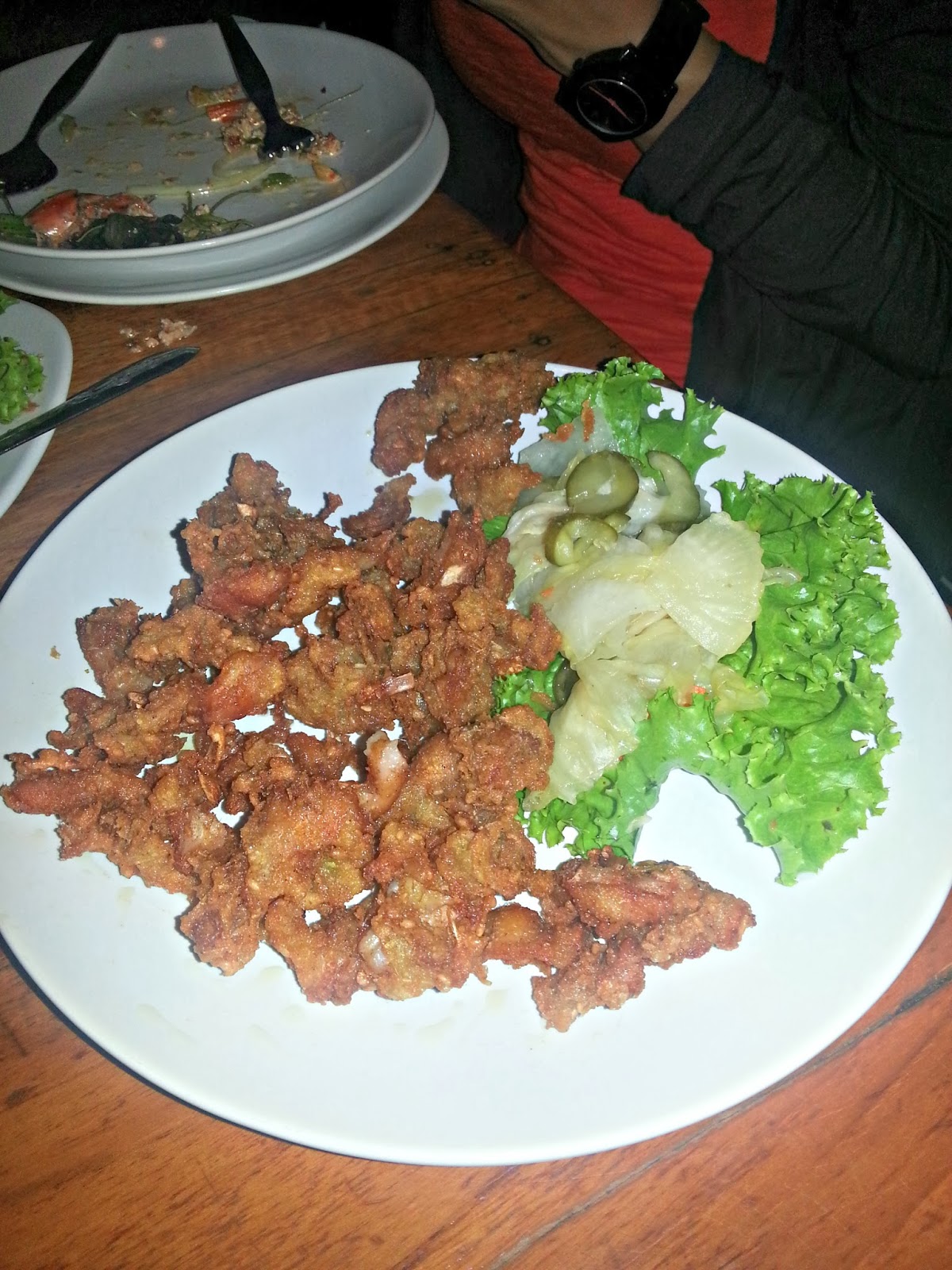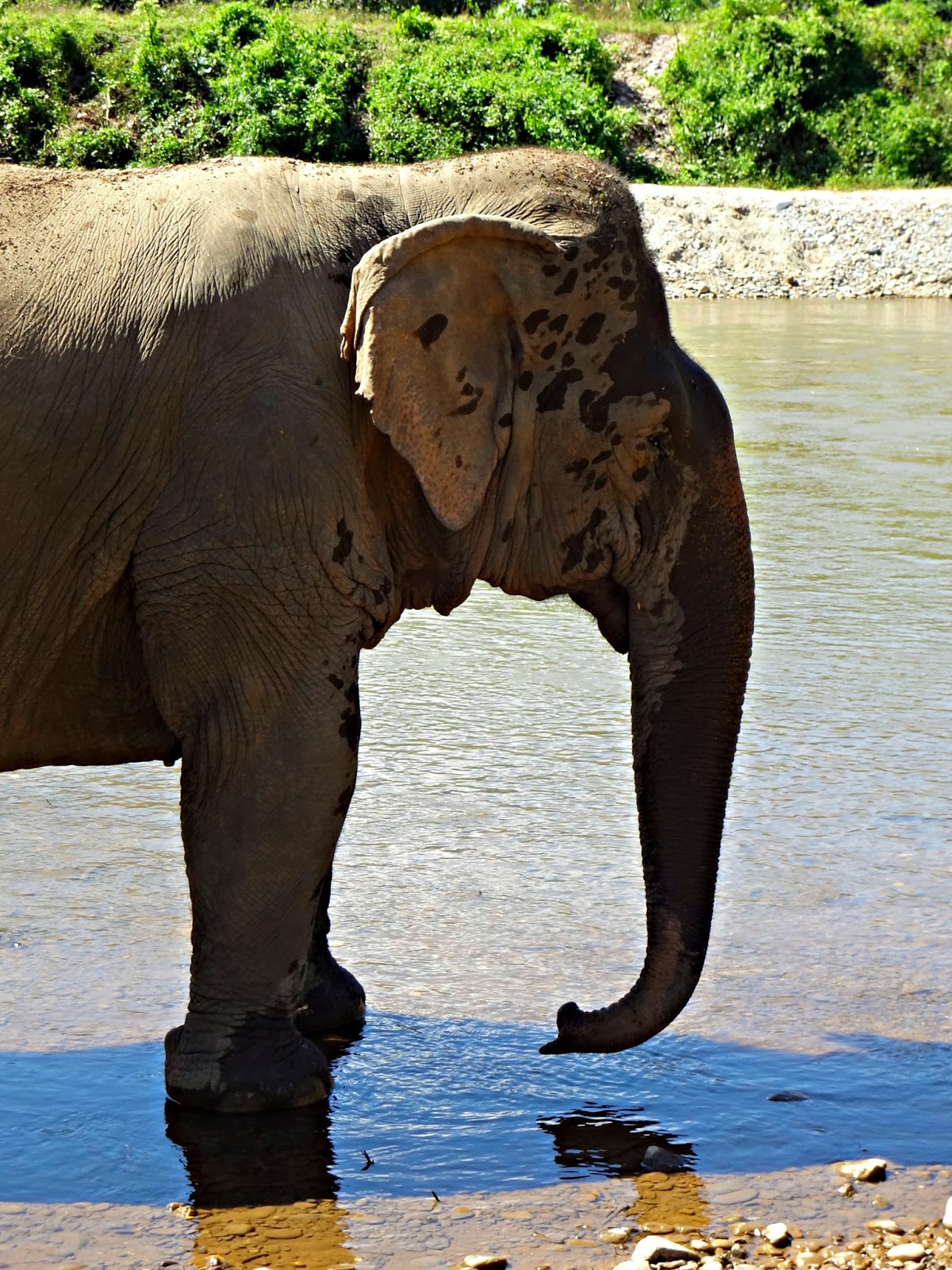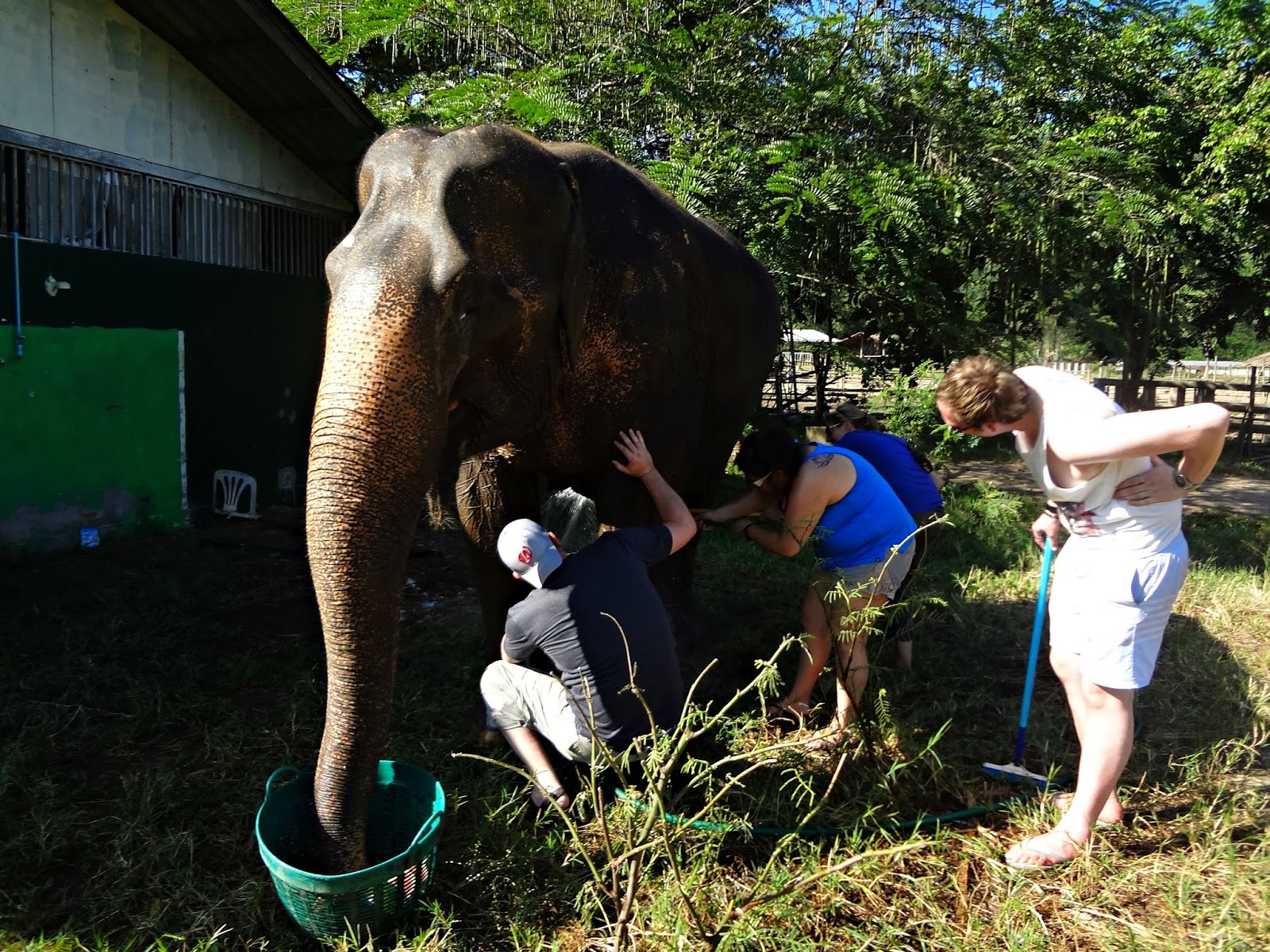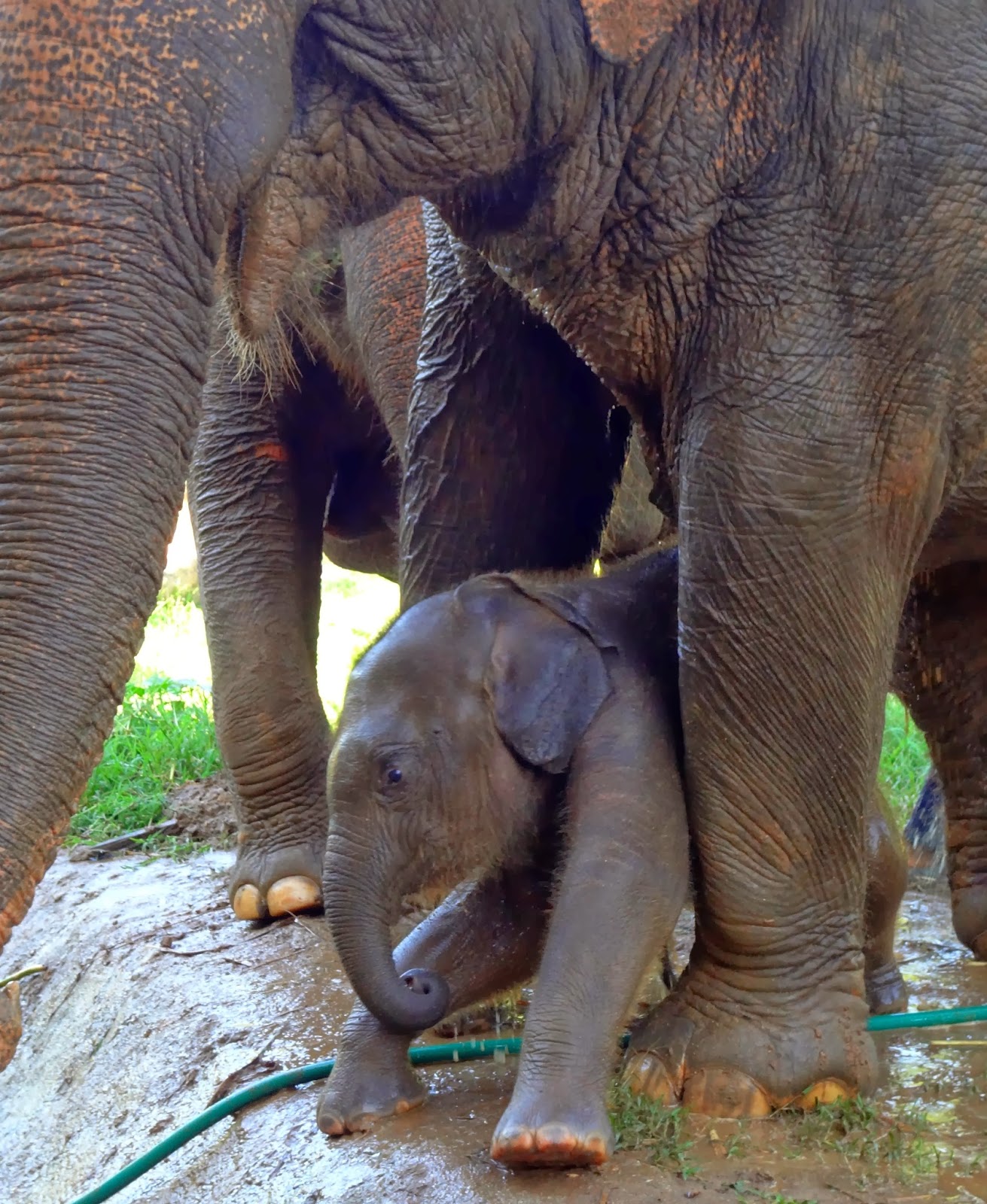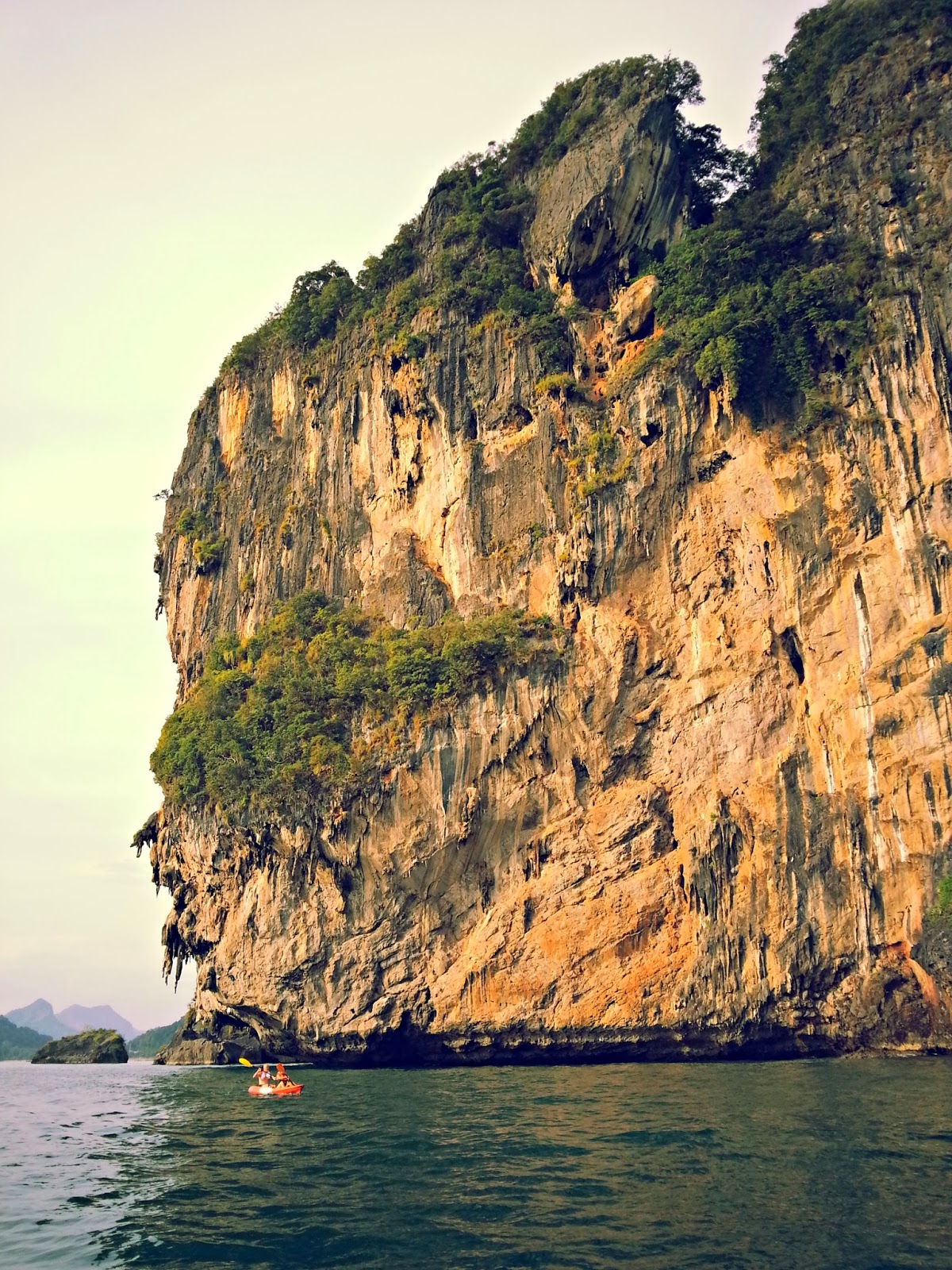My primary reason for wanting to go to Malaysia was to go to the Malaysian portion of the island of Borneo, and my primary reason for wanting to go to Borneo was to see orangutans in the wild. It may see a little odd then that I only spent about 2 days out of 17 in Malaysia looking for orangutans, but that’s because I found so much else to occupy my time once I got there. I think out of all the countries I’ve visited so far, Malaysia is the most multicultural; it has a wealth of local ethnic groups, languages, religions, immigrant populations, and seems to manage to make them all work in concert toward a national identity, probably better even than India. Everywhere I went, I witnessed a fantastic blending of people that were working and living together without any tensions that I could pick up on. Once you add a growth economy, solid infrastructure, and reasonable cost of living on top of that, it should be easy to see why it’s become one of my favorite countries this year.
 |
| A divemaster looking at Elvis, probably the chunkiest moray eel I've ever seen |
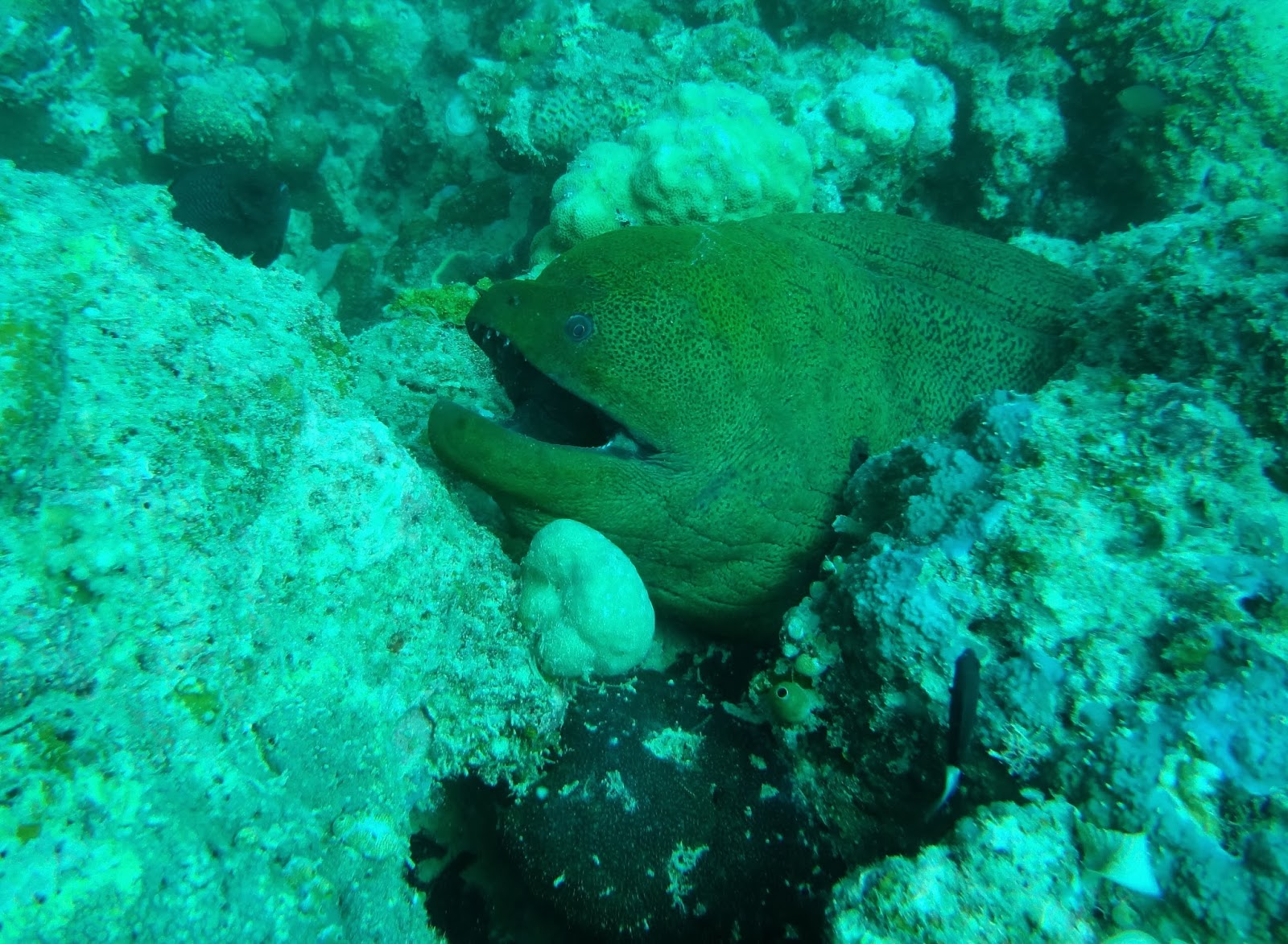 |
| Elvis up close |
I started off taking the bus from Thailand to Penang, which is a really beautiful historic town on the coast. I wish I had stayed there another day or two, because it has a lot of interesting history, classical buildings, and character, but I was in a hurry to get to Kuala Lumpur, which, as I found out, has practically none of those things. Don’t get me wrong - Kuala Lumpur (or KL to the locals) is a fairly attractive city, and modern, and clean, and about as cosmopolitan as NYC, but unless you’re really into shopping, it’s also pretty dull. But in some ways that worked out for me, because I promptly caught a cold when traveling to KL, so I checked into a cushy hotel using points, crawled into bed for about 3 days and watched Asian MTV and HBO, all of which are benefits of modern cities.
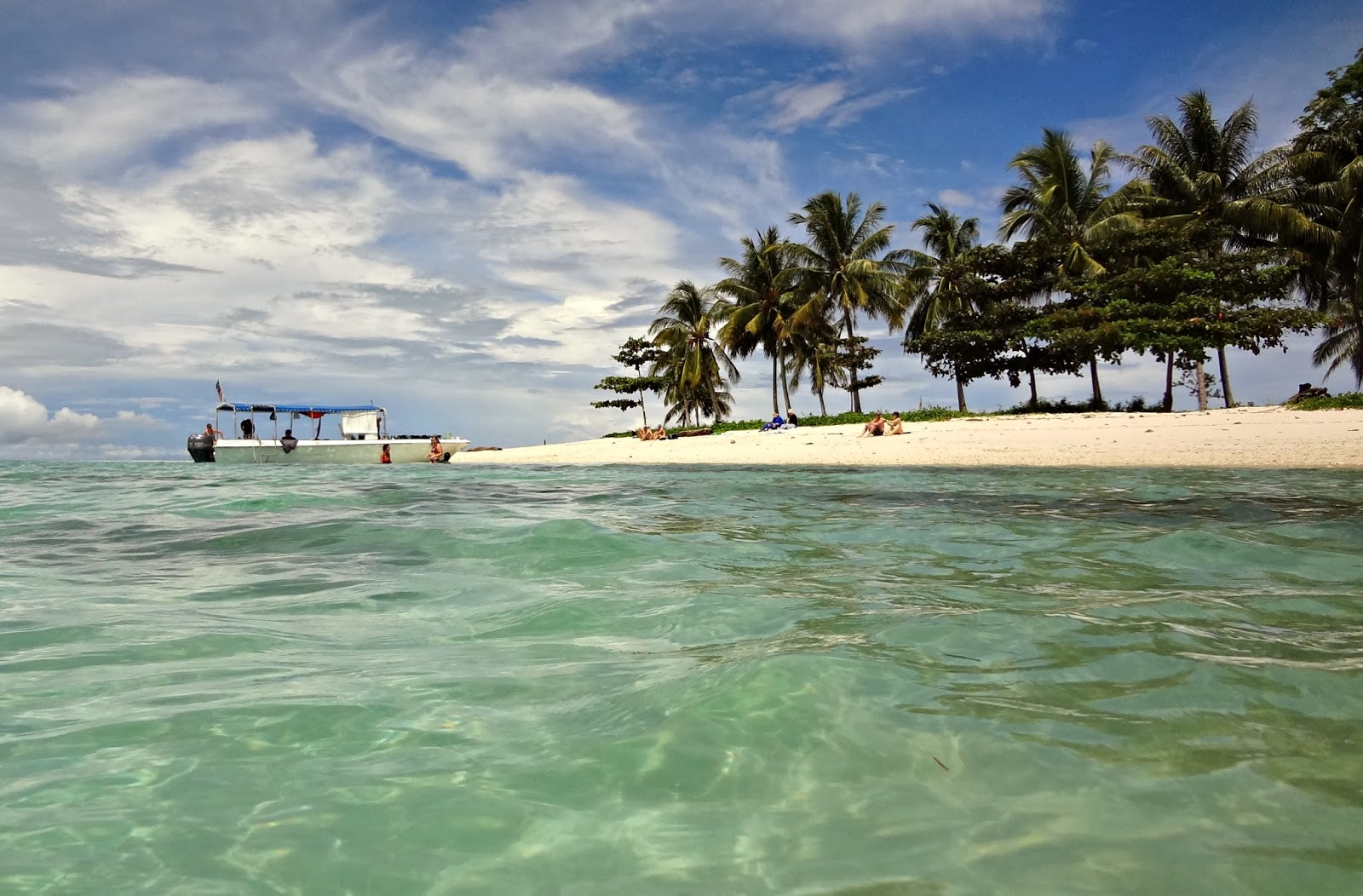 |
| Nice place for lunch, right? |
 |
| Everyone all together now... Nemo! |
Once I recovered from my cold, I took a little time to get a new pair of glasses, get more passport pages added at the US embassy, and book my flight to Borneo to see some big orange apes… except in planning that, I found out that I was going to be a stone’s throw (i.e., less than an 8 hour bus ride, my current definition of “a stone’s throw”) from Sipadan, widely considered one of the best SCUBA diving locations in the world. After researching that the dives were about ⅓ the price I’m used to paying and that there was space at the dive resort for about $25 a night, I knew I wasn’t going to be able to pass up getting into the ocean too. So, this blog post is going to be mainly about the dive trip, and next post will be about the orangutans. Spoiler - I saw some. Many more than expected, actually.
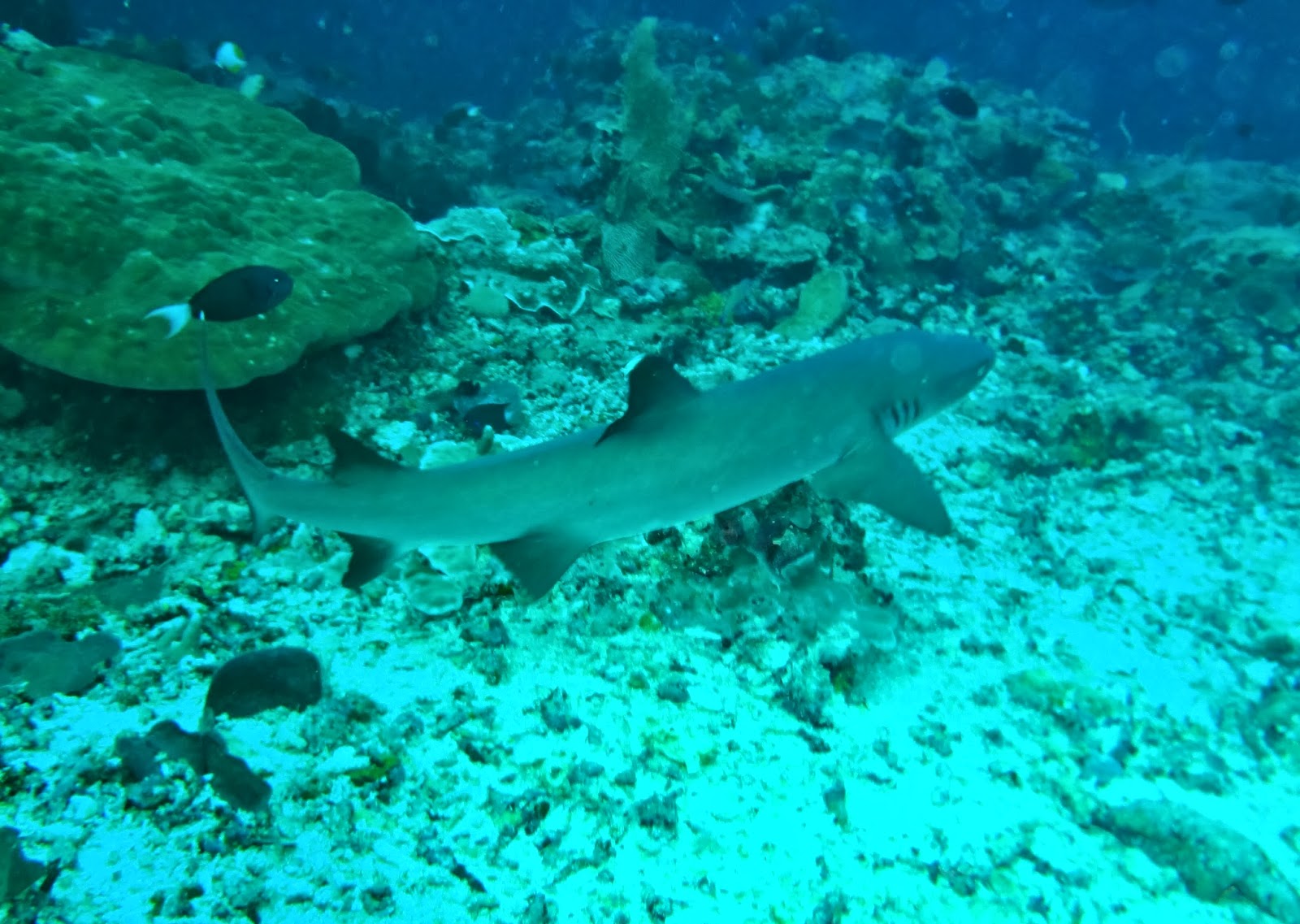 |
| Lots and lots of white tip reef sharks in Sipadan |
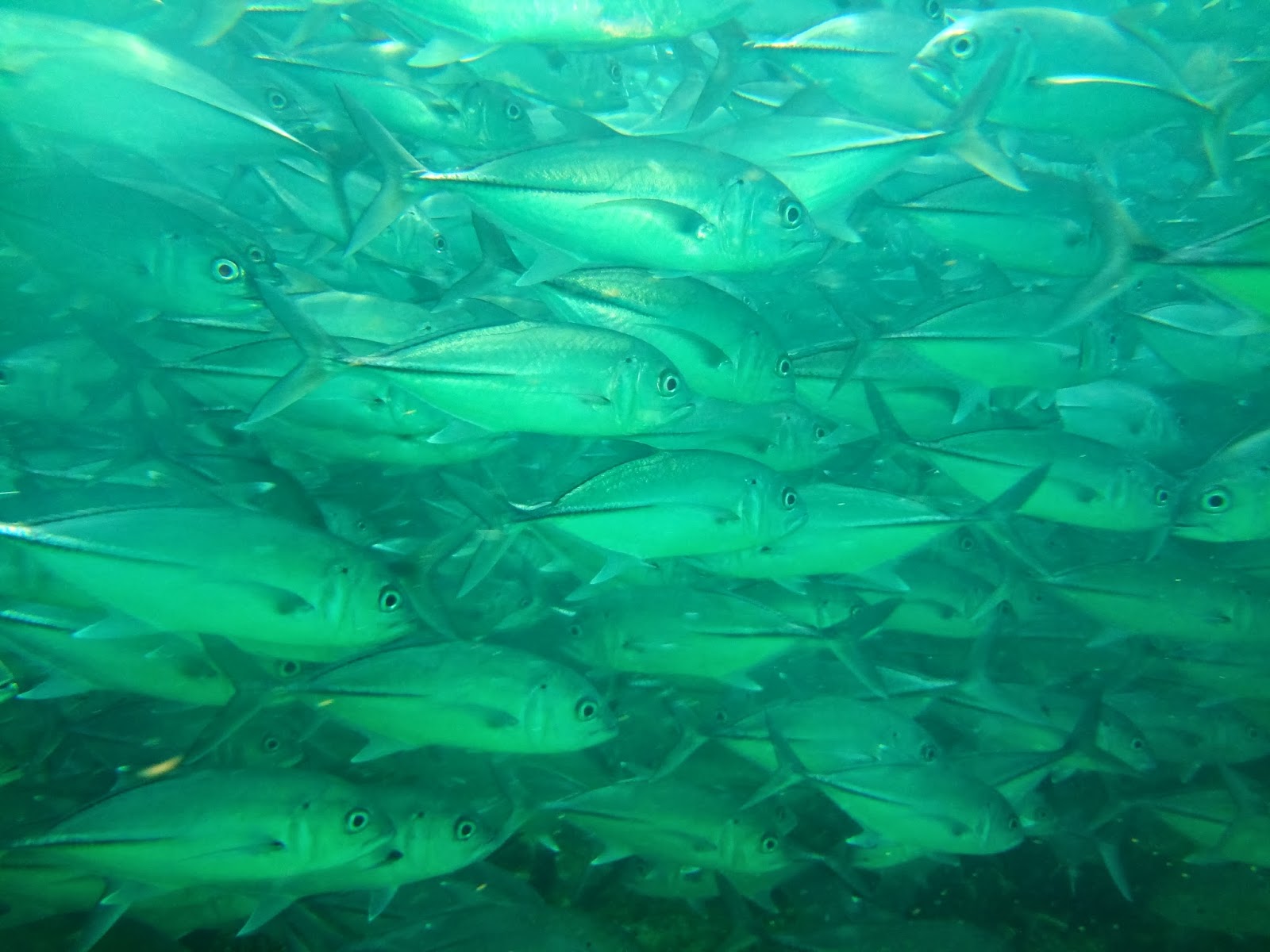 |
| A wall of jacks I got to swim with in Sipadan |
 |
| And even more turtles than sharks on the trip |
My 7 hour bus trip took me to Semporna, in the province of Sabah on Borneo, which has to be one of the seediest, skeeviest, run-down towns I’ve ever stepped off a bus into, so I was very happy that I choose not to do my dives from the coast, but instead from Mabul Island, about a 40 minute boat ride from Semporna. One amusing side note about Semporna: the week before I got there, apparently there was a Taiwanese tourist who was kidnapped/killed (details were sketchy, and I never bothered to look them up) in the area, and for the entire trip, anytime I told someone that I was going to or just had been in Semporna, they all got this look of horror and disbelief on their faces, and asked me if I had heard about the incident, and wasn’t I terrified to be in the area? I got this reaction even from people who lived in Semporna! Generally, I found this pretty entertaining, because I doubt very much if Sabah has had more than a couple of murders in the past several years, and security was on high alert the whole time I was there, so all things considered, I felt safer there than in a lot of other places I’ve been, including many areas of DC.
 |
| Some local entrepreneur had the idea to buy an oil drilling platform and turn it into a dive resort. Not sure I'd want to stay there, but I have to admire his originality |
 |
| Bumphead parrotfish, about the size of a medium dog |
Back to Mabul Island, which you’re probably wondering why I stayed there and not Sipadan. It’s because about 10 years ago, the Malaysian government declared Sipadan a marine preserve and kicked all the resorts off the island itself and instituted a strict permit system limiting the number of divers per day. They had been worried that the increasing tourism was beginning to damage the reefs, so now divers can only stop for the day on one beach on Sipadan, at a hefty fee - a policy I give the government a lot of credit for. All the dive resorts now operate on nearby islands, such as Mabul, and do day trips to Sipadan itself. I’ll subject you to a bit of a rant about the environmental vibe in Borneo next post, but I think Malaysia really did the right thing with Sipadan. Not that I was planning on experiencing it firsthand, mind you. Permits for diving at Sipadan are booked up months in advance, and I couldn’t reserve one with 4 days notice, but I figured that diving just around the fringes would be almost as good.
 |
| After I saw this turtle right off of the resort beach, I began to wonder why I was SCUBA diving at all |
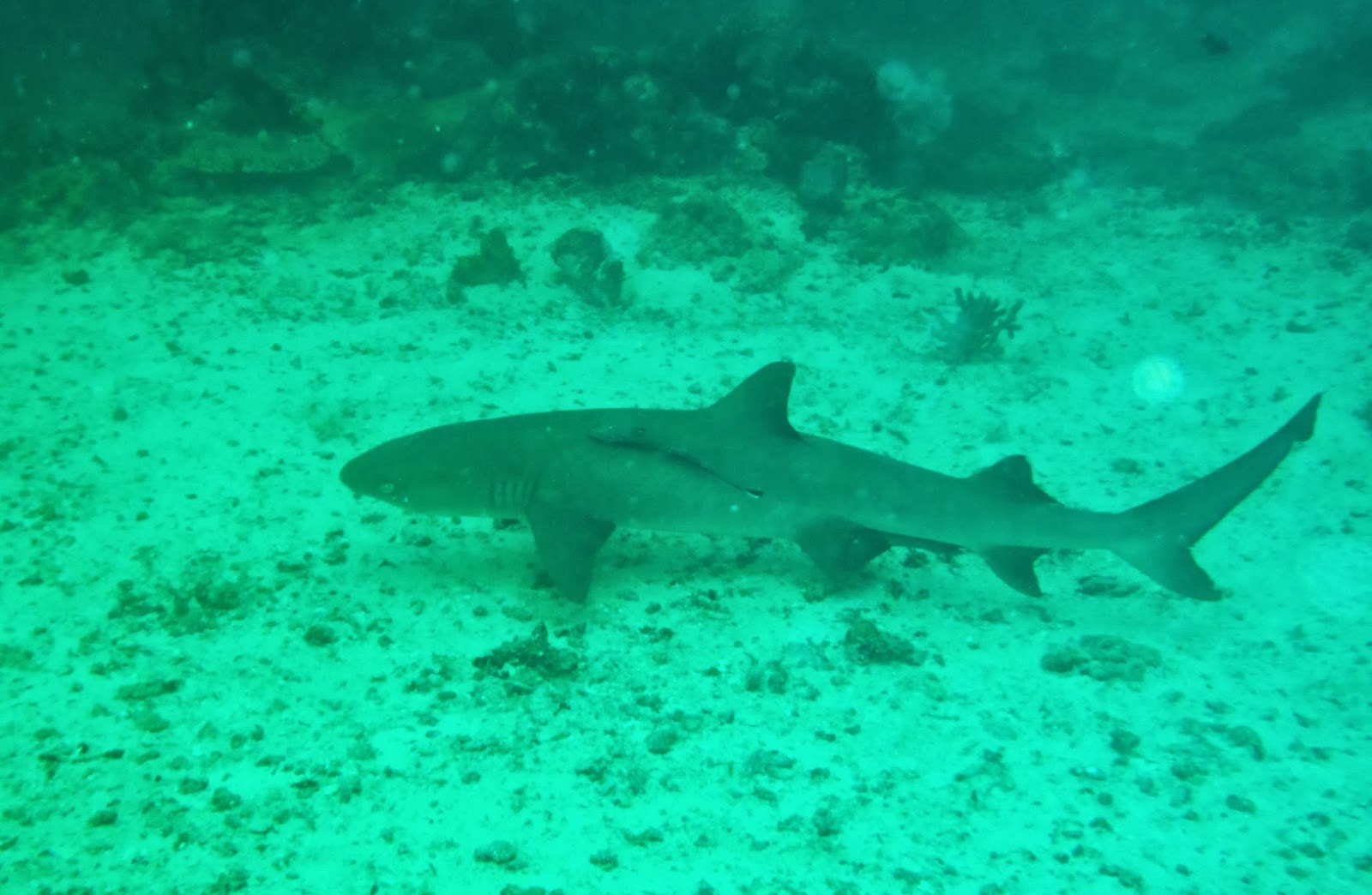

The dive resort I was staying in was a rustically pleasant combination of private bungalows and dorms with a good beach and about the friendliest and most capable staff I’ve ever been diving with. And, as if just to remind me that I wasn’t in Cancun or Costa Rica, there was also an illegal squatters’ camp right next to the resort. The eastern coast of Malaysian Borneo borders both Indonesia and the Philippines, and if that wasn’t enough of a problem for border control, there is also an ethnic sub-group called the Bajau, known locally as “Sea Gypsys.” Since before the modern borders were formed, the Bajau have lived a mainly nomadic life at sea, migrating between the islands in the area, but they’ve had more difficulties living that traditional lifestyle in the modern era. Many of them don’t actually have citizenship in any country, have little money and education, and as border patrols have tightened, a lot of them have taken up long-term residence on whatever islands they can find space - including Mabul, right in between two tourist resorts. To their credit, both resorts seem to have taken a very constructive response to their neighbors and have helped to construct a school on the island for the Bajau children and try to educate the community on the importance of the reefs and sustainable fishing practices. Begging or bothering the tourists is discouraged, but otherwise everyone seems to get along reasonably well, and I have to admit it added a lot of character to the resort to see someone preparing evening meals or repairing a boat next door (the garbage and wondering where all the sewage went, however, did not provide added character).
 |
| The Bajau camp on Mabul |
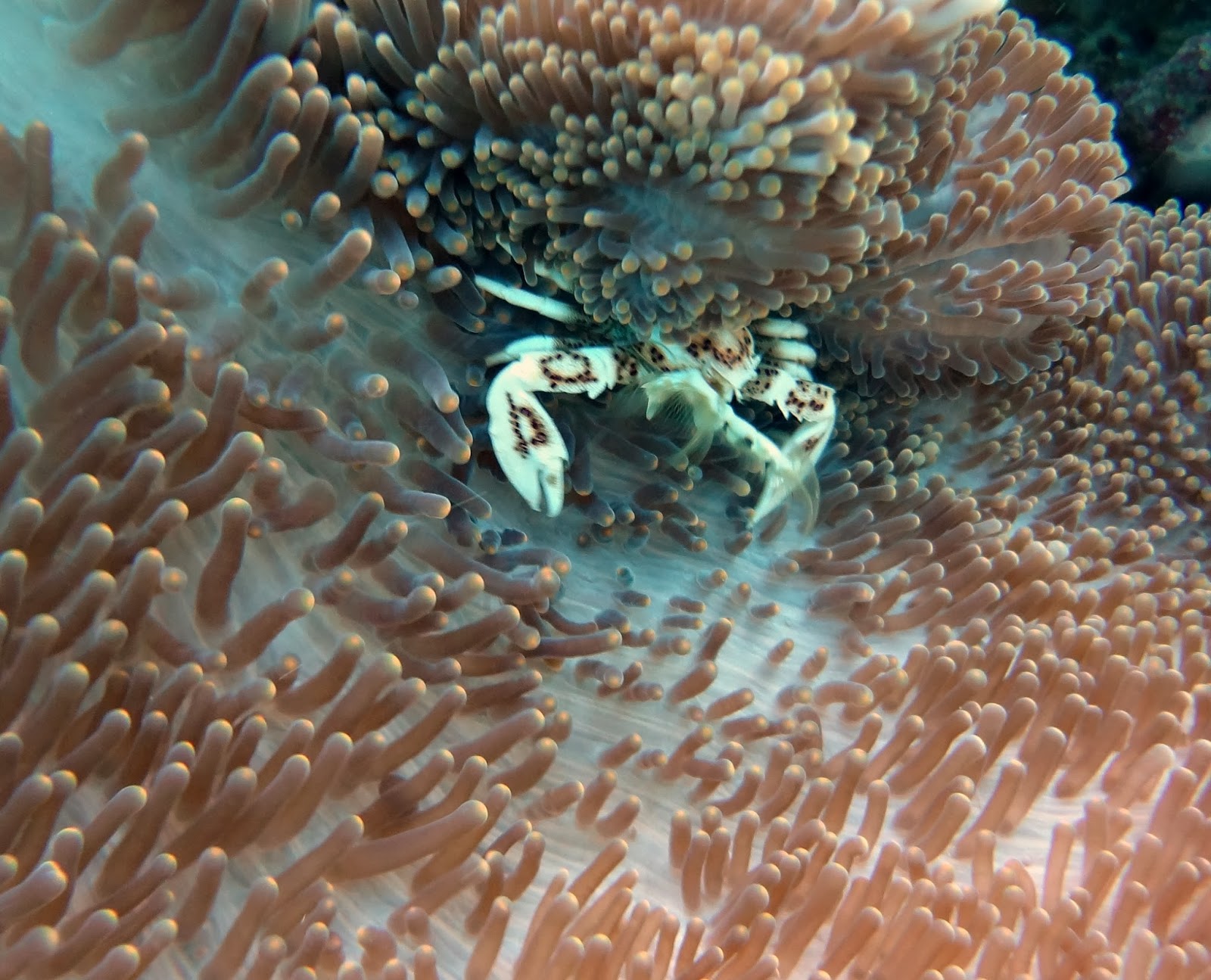 |
| Anemone crab |
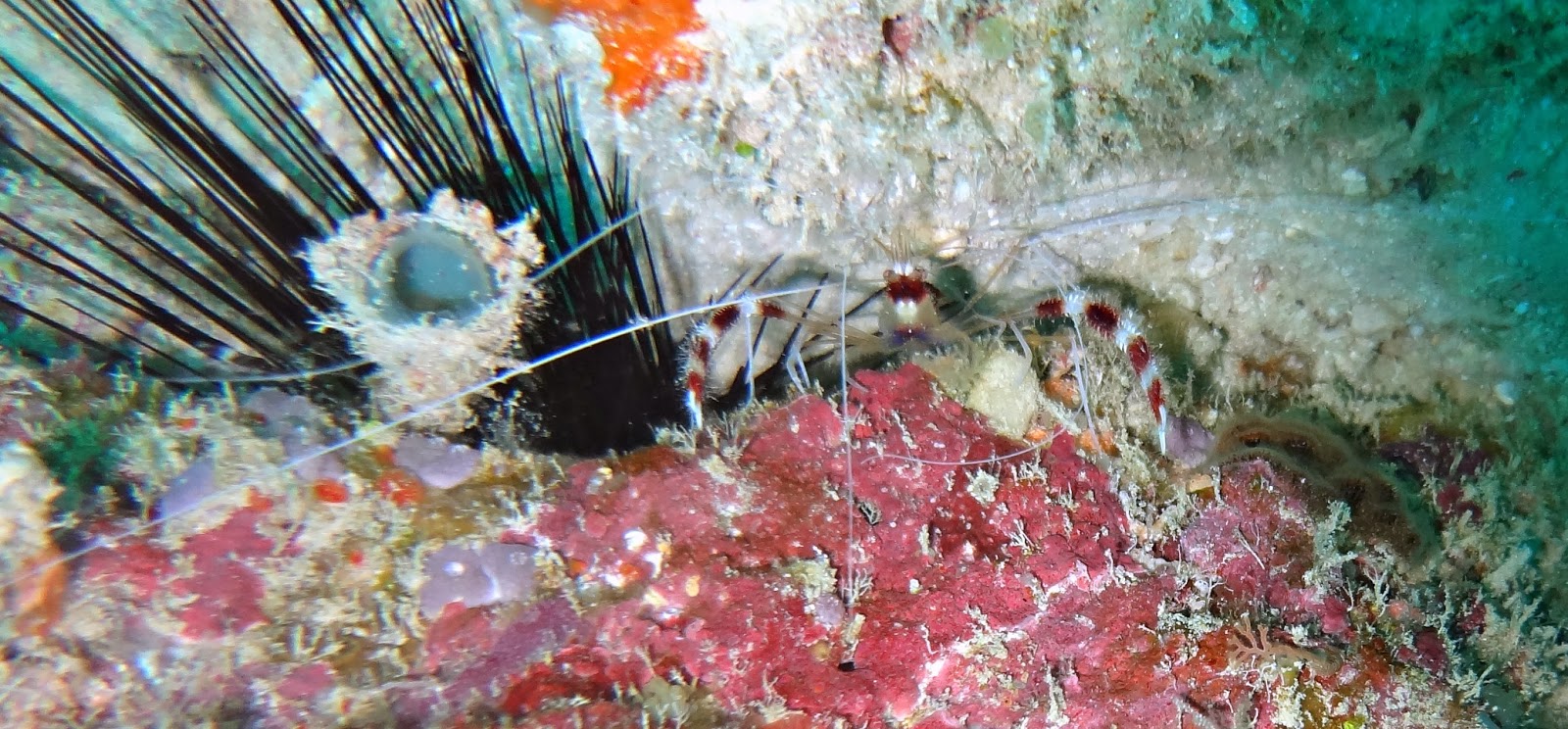 |
| A banded cleaning shrimp |
I planned on diving three days in Mabul, and on my first day, several staff told me I should put my name on the waiting list for Sipadan because there are always people who get sick or don’t show up, and there may be a chance I could sneak in. I had my doubts, but added my name at the end of the first day and was told the next morning I was going to Sipadan! Granted, that one day’s diving added another 50% to my total cost for the lodging and other dives, but it was worth it. I ended up diving 10 dives on four islands: Mabul, Kapalai, Sibuan, and Sipadan. For me, the big difference was that most of the diving here is considered “muck diving”, which is a term used to describe diving when you’re looking for very small creatures living in sand, rubble, or garbage. I know that doesn’t sound all that great, but trust me, it’s pretty cool in its own way. Muck diving started because for many years, this area had a lot of dynamite fishing, which kills all the fish, destroys all the coral, and basically wrecks everything. Then, somewhere along the way, someone noticed that there were a lot of really interesting, really unusual, and really resilient fish living in the wreckage, but they were almost all less than a couple of inches long. They had always been there, but they were either so tough to find, or overshadowed by the big stuff, that no one paid much attention before. So, a new way of diving started, one that focused on moving very slowly in the shallows, looking for very weird little fish and invertebrates that were hidden in the sand and coral rubble. And when I say “weird”, I mean really weird - fish diguised as leaves, octopus that hide in plastic bottles and pretend they’re fish, shrimp less than an inch long that live in anemones, but many of them are really beautiful, if you know where to look or how to spot them. I saw more crustaceans than I ever have on dives before, and the skill of the divemasters to see something smaller than my thumbnail from a couple of feet away was incredible. I wasn’t sure how I would enjoy just staring at the sand for an hour at a time, but it was a biology nerd’s paradise. In some ways, it was the same lesson I learned in India; pay attention to the little moments of beauty and the ugly bigger picture fades out of view.
 |
| Cuttlefish |
 |
| I love cuttlefish! |
 |
| Not just one, but three turtles at a time on Sipadan |
And then there was Sipadan, which is known for the big critters. To be honest, the visibility was terrible the day I was there (sometimes as little as 30 feet), but even with that, I still saw some incredible sights, enough to make me agree that it is one of the truly unique dive sites. Sipadan is known for being a turtle hangout, something I can attest to, since I saw about 13 turtles from two species that day, including turtles mating, which is a new diving experience for me. As if that weren’t enough, there were also gray reef sharks, white-tip reef sharks, bumphead parrotfish, napolean wrasses, and huge schools of jacks and other fish. It’s one of those places that gives me hope that there really are still fish left in the ocean. And it was enough to seriously tempt me to stay for another day, or few days, or weeks and dive until I was sick of being in the water, but instead, I went back to Semporna (ick), took the bus to Sepilok, and started my hunt for sights of a more primate nature - and just like in Sipadan, my expectations were met and exceeded.
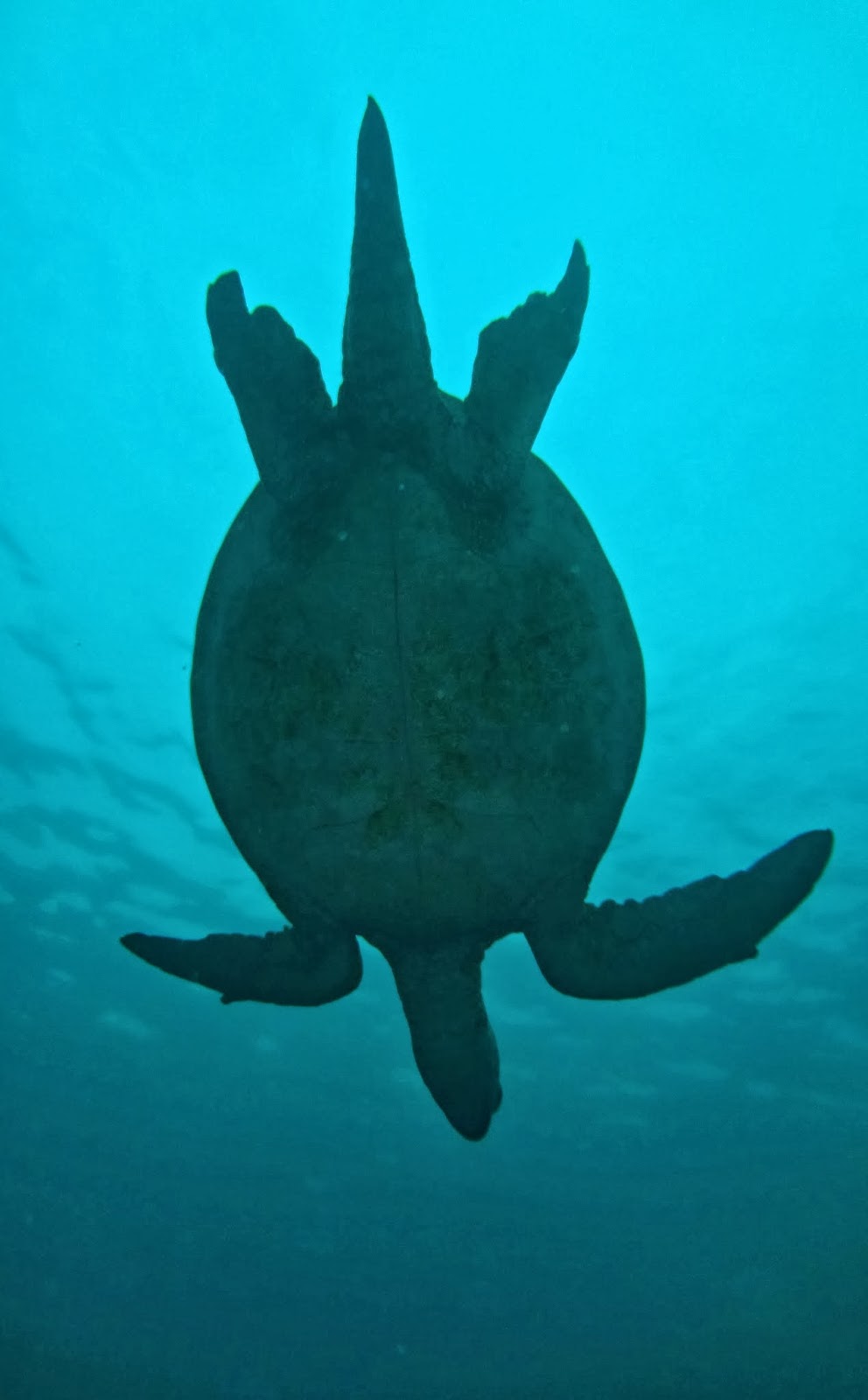 |
| So many turtles |
 |
| Turtle overload! |
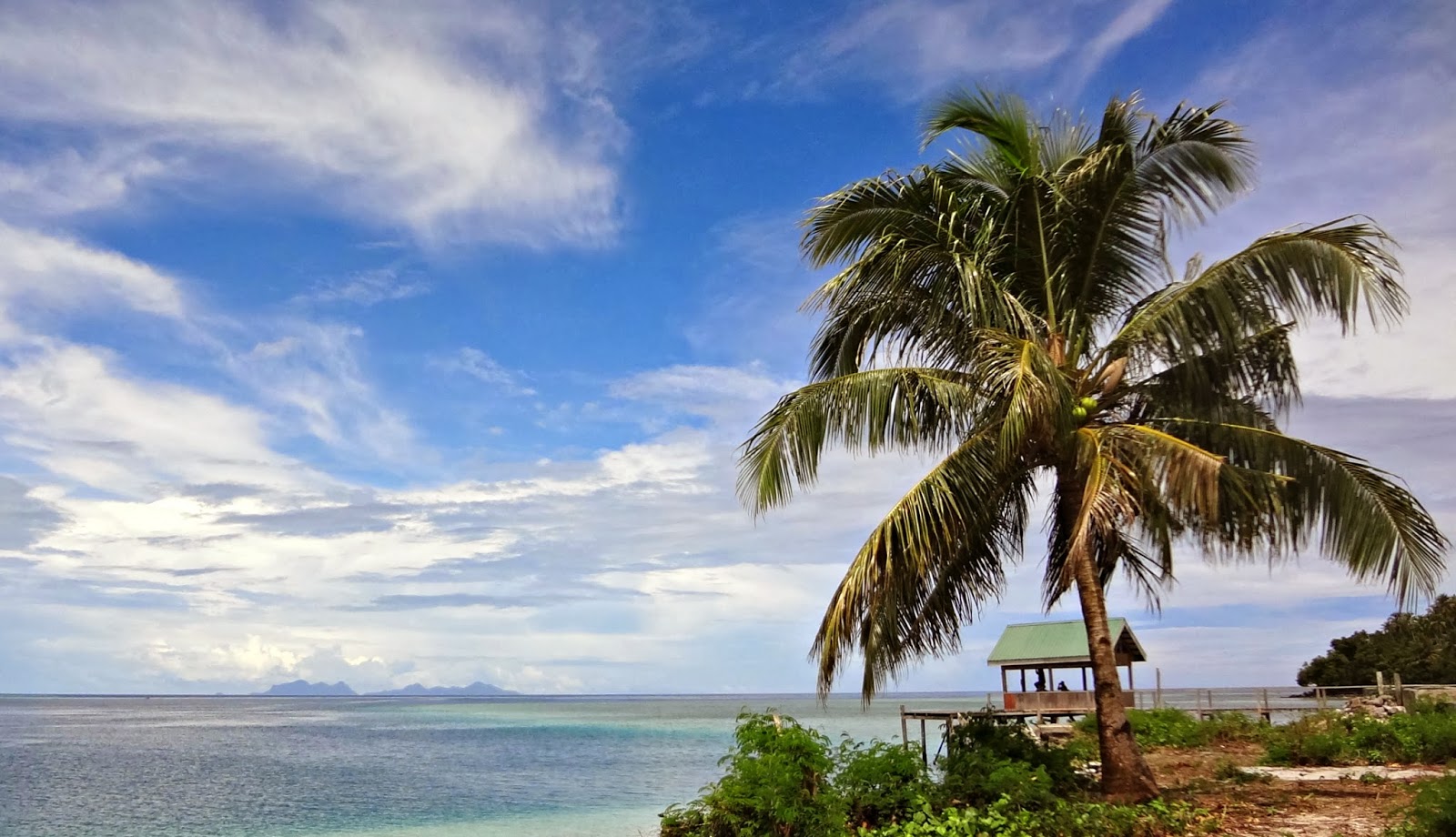 |
| A Borneo afternoon |

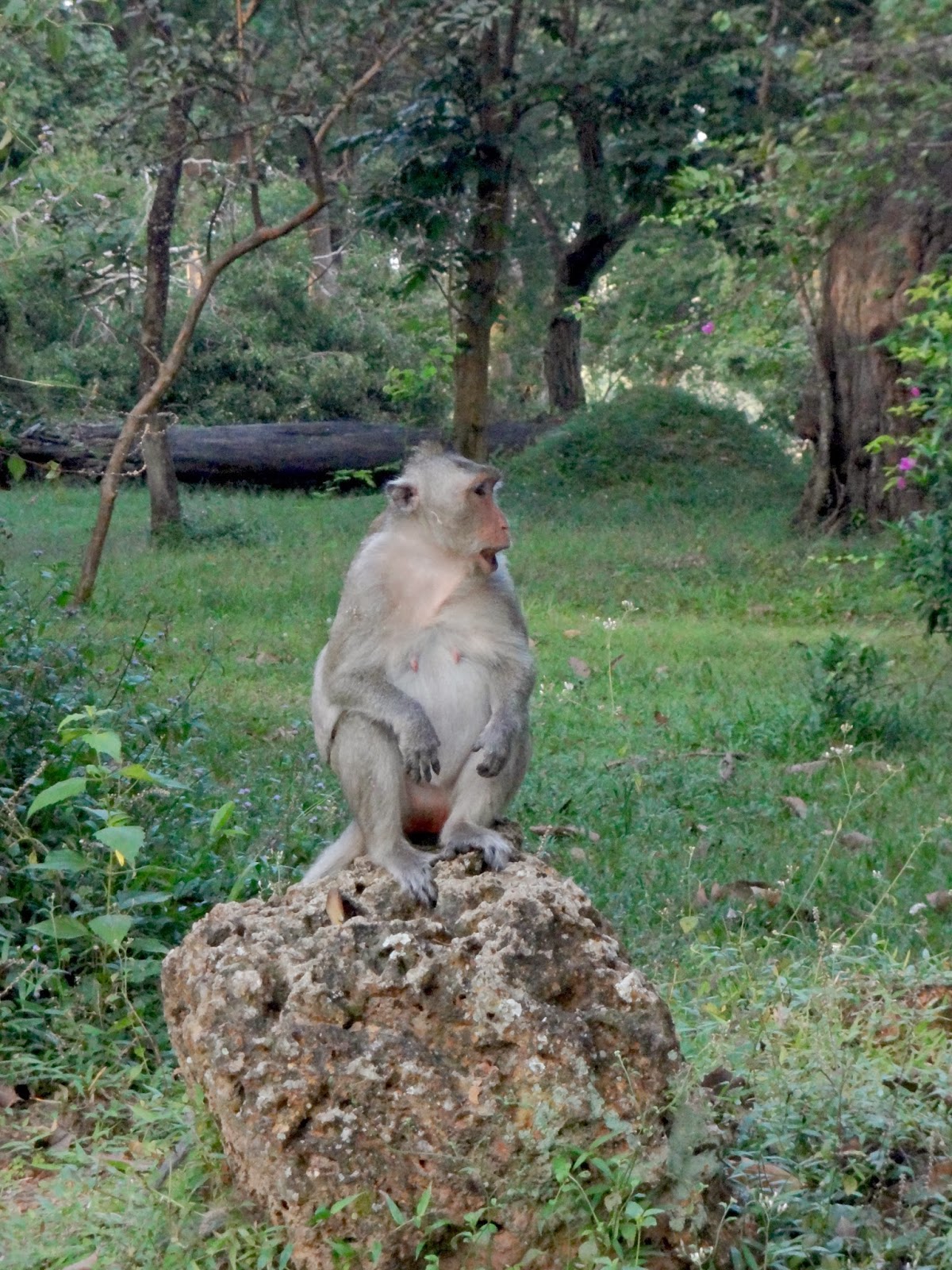



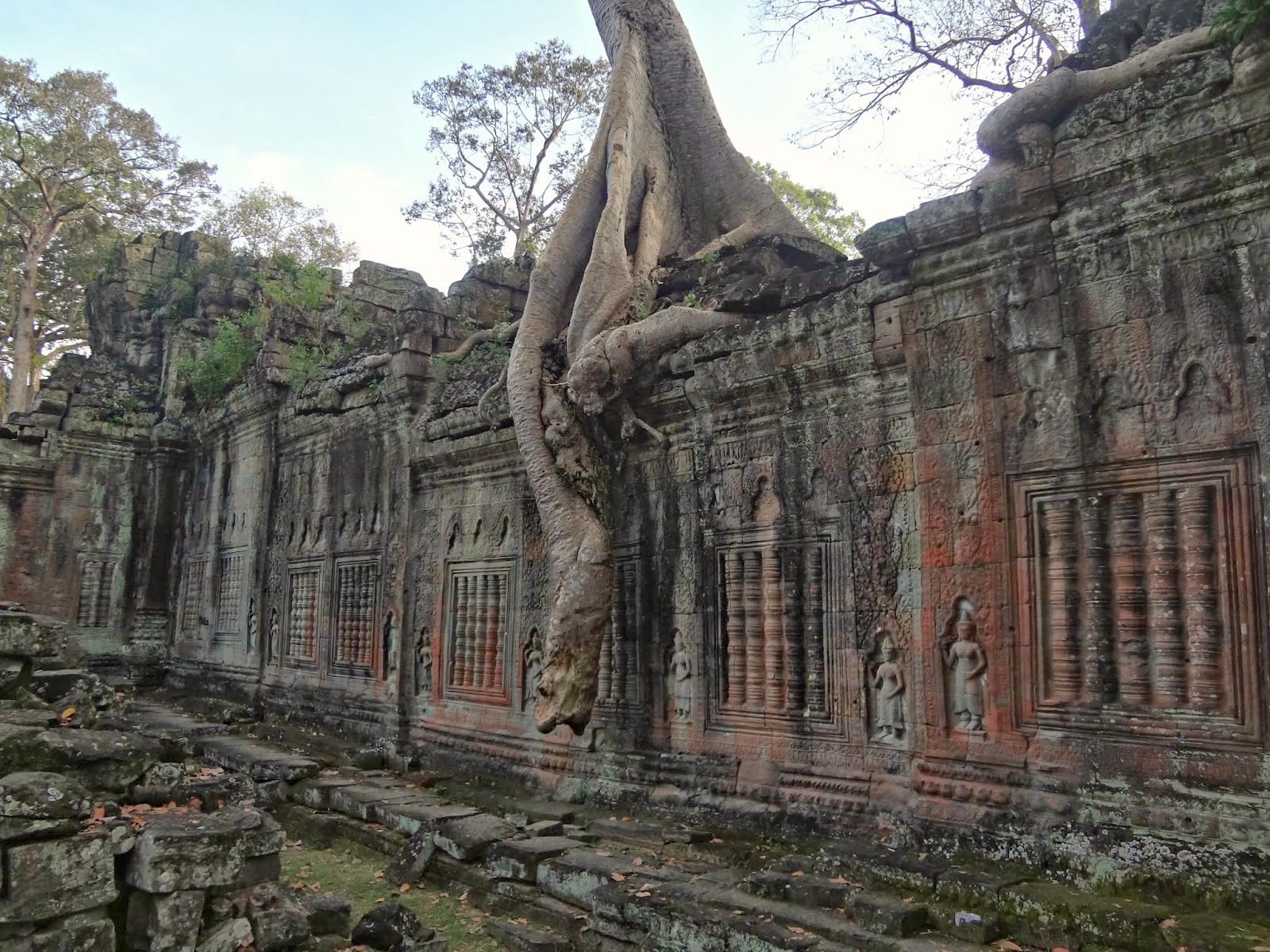
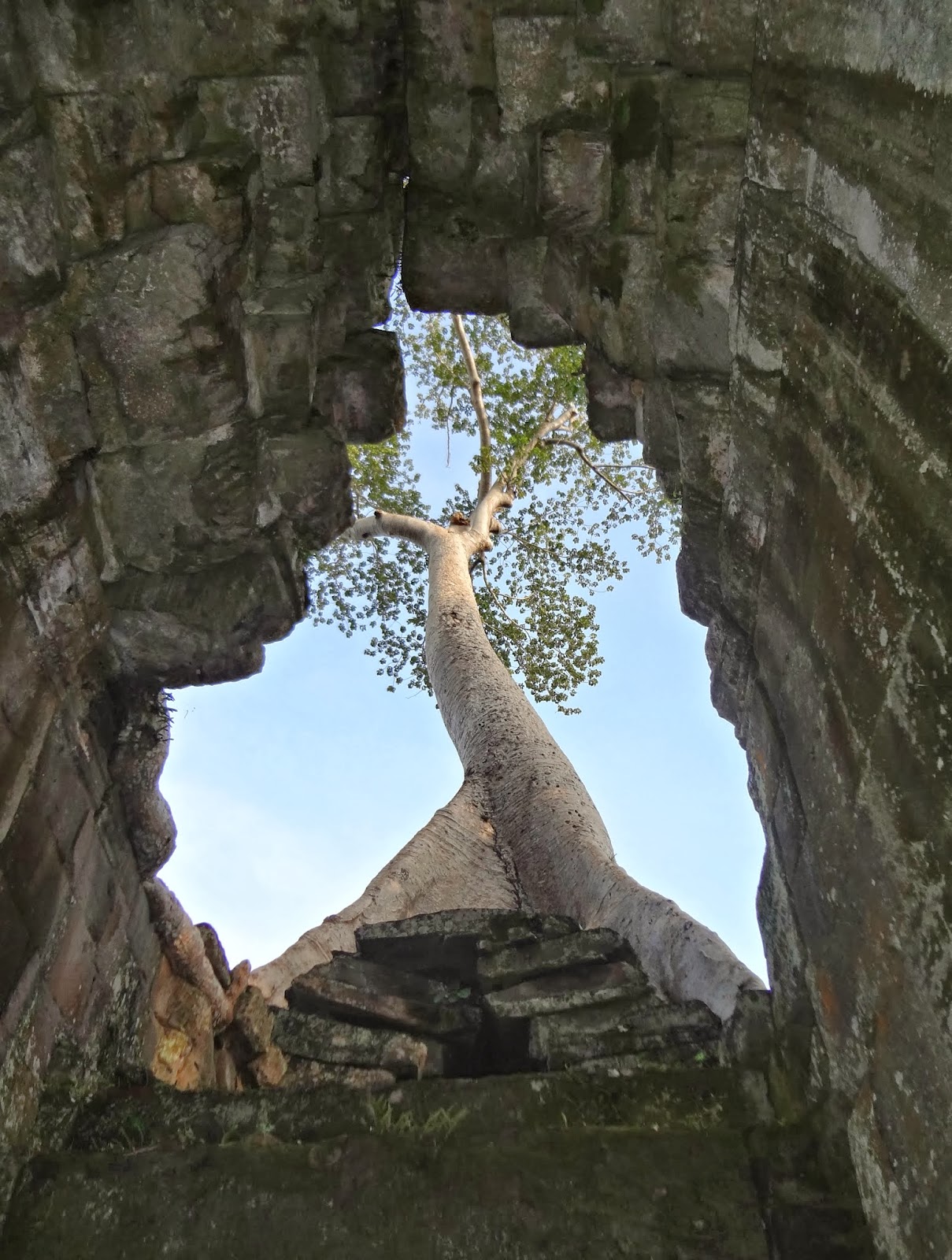


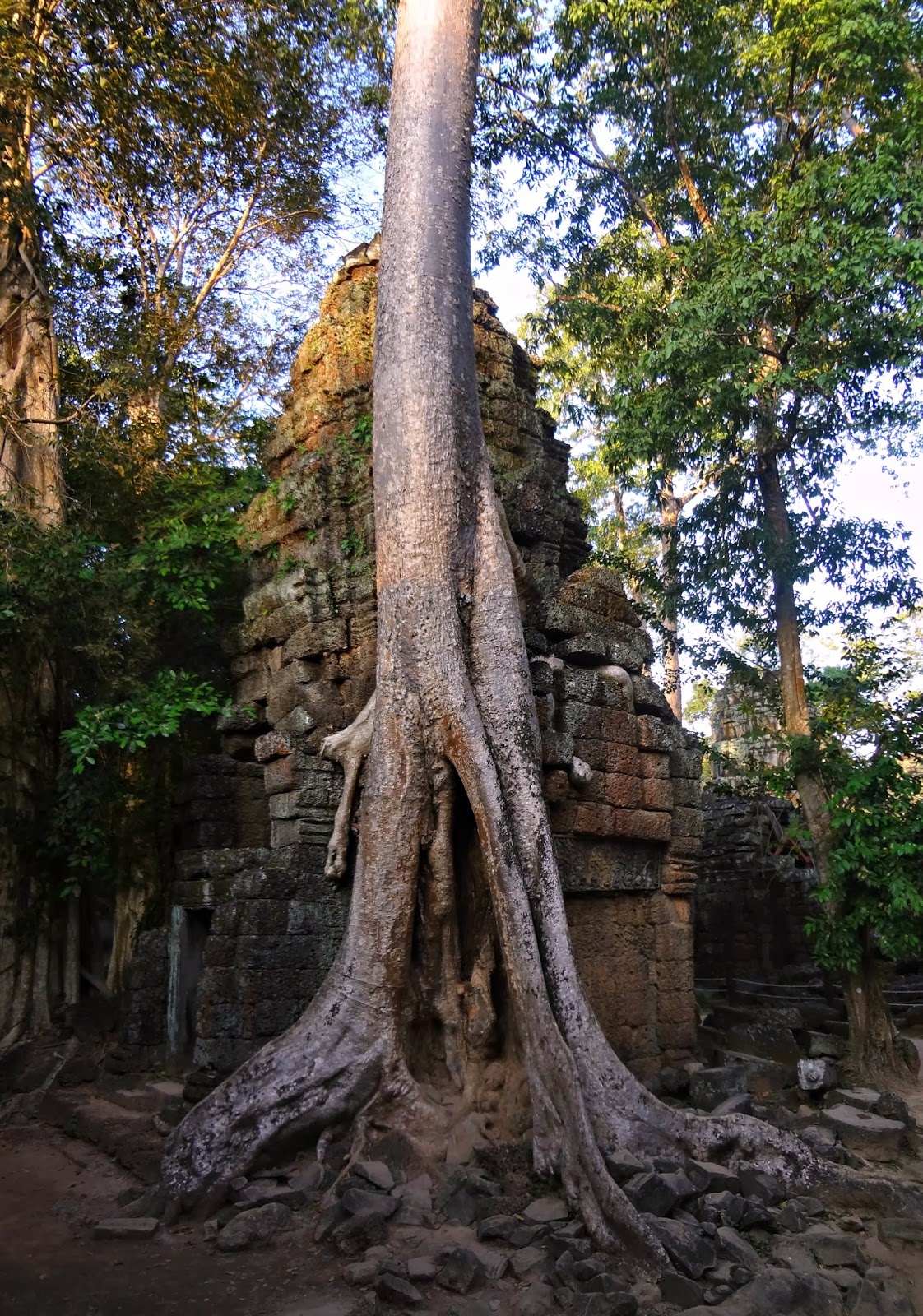
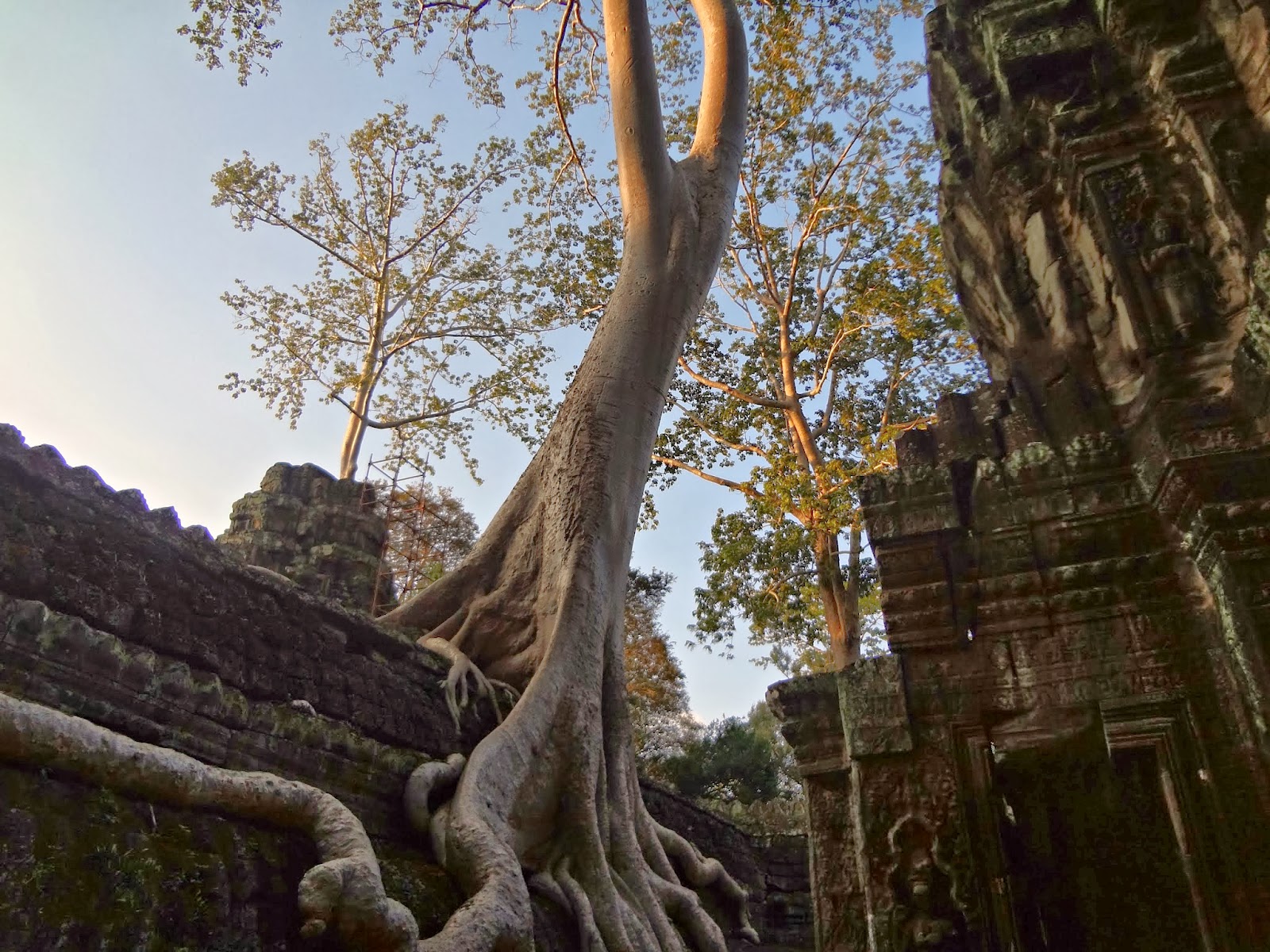


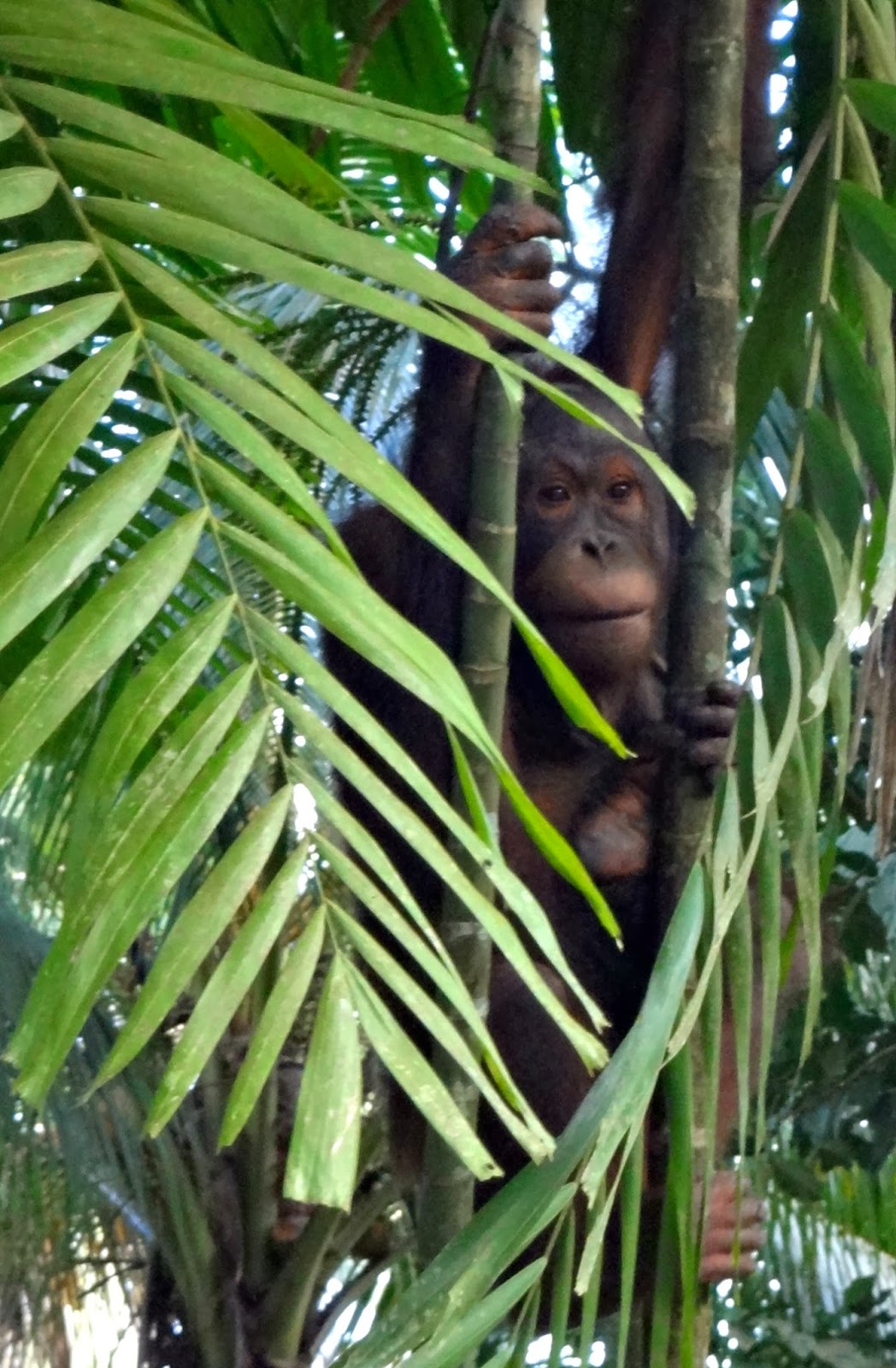



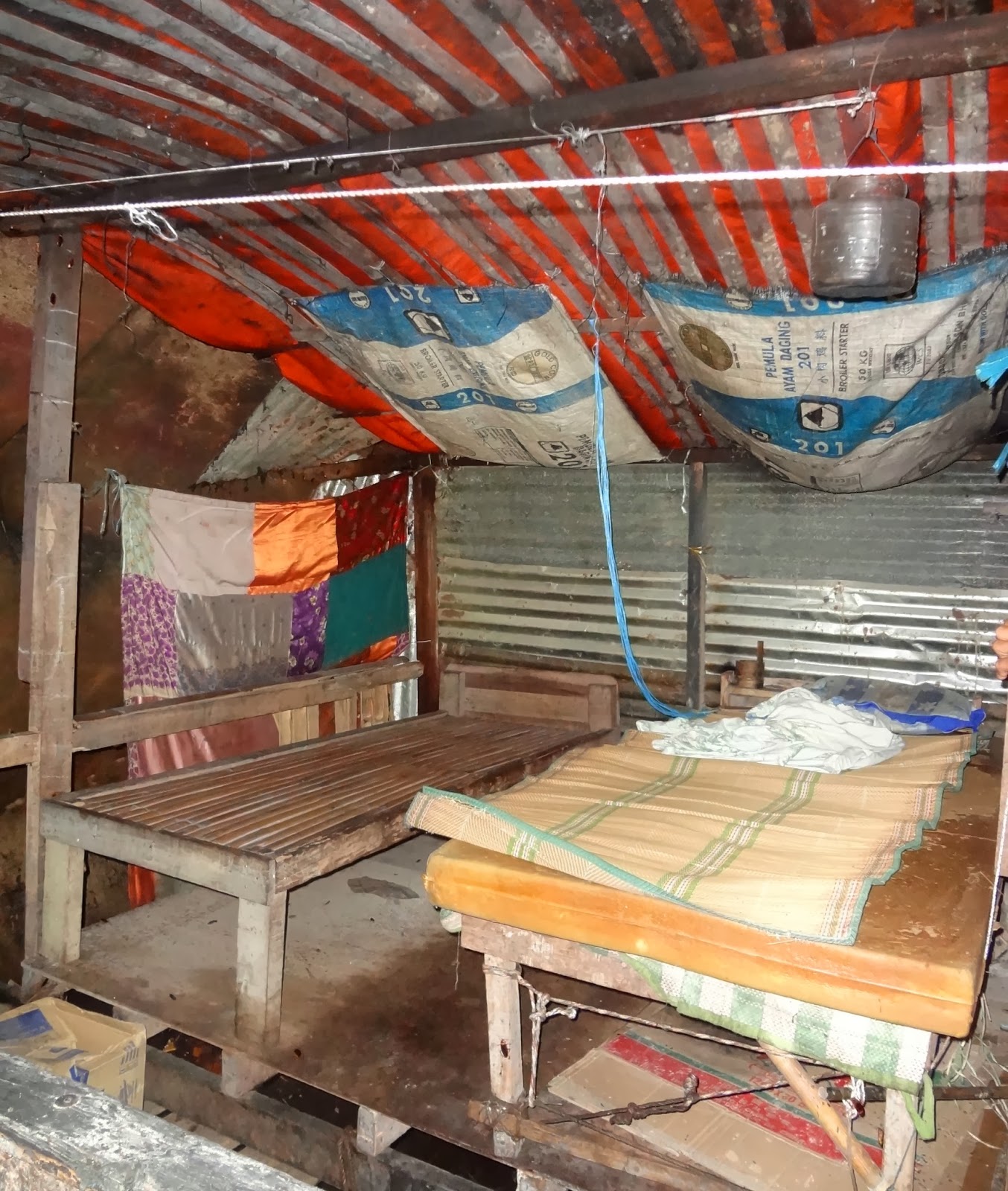
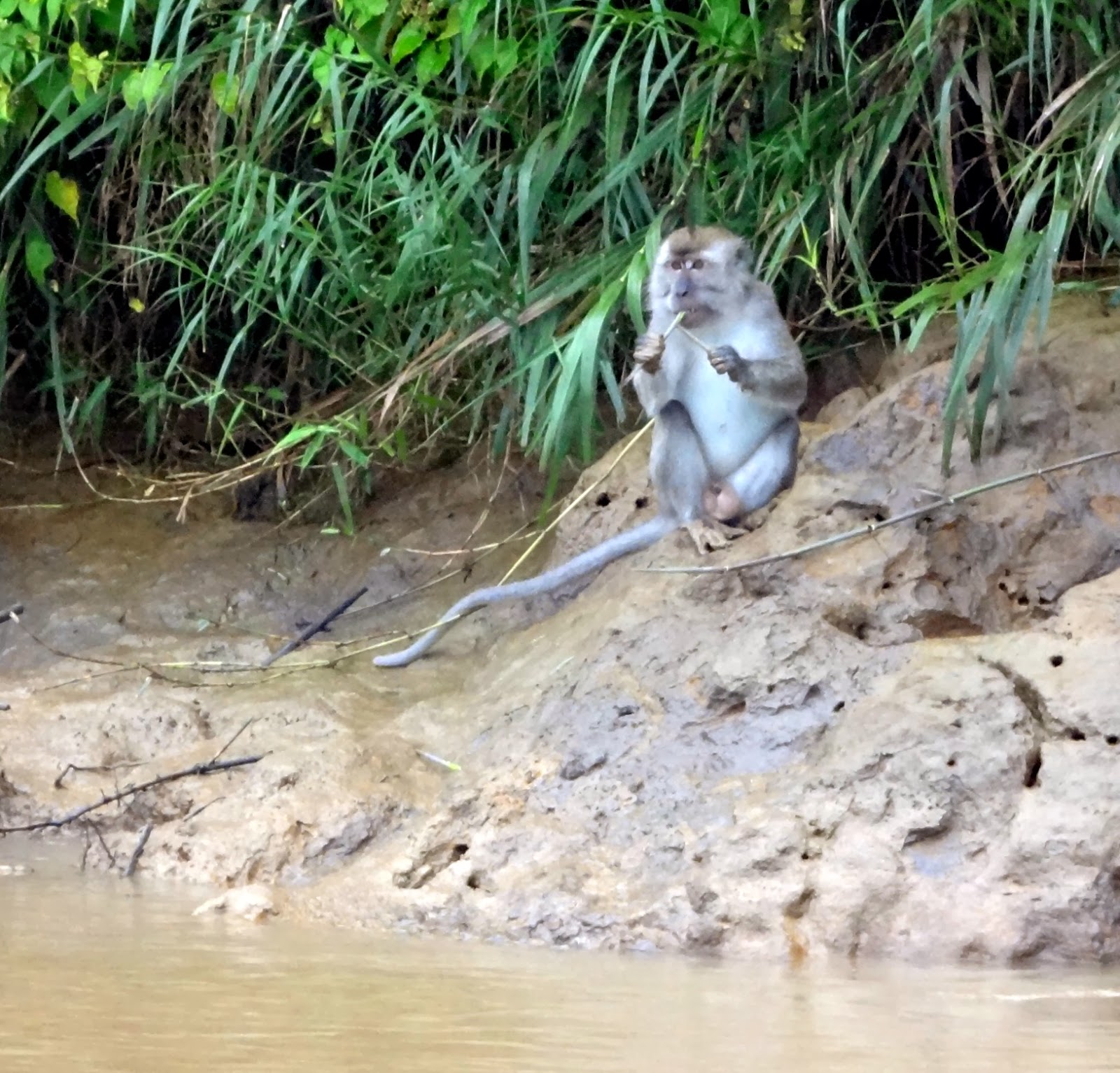
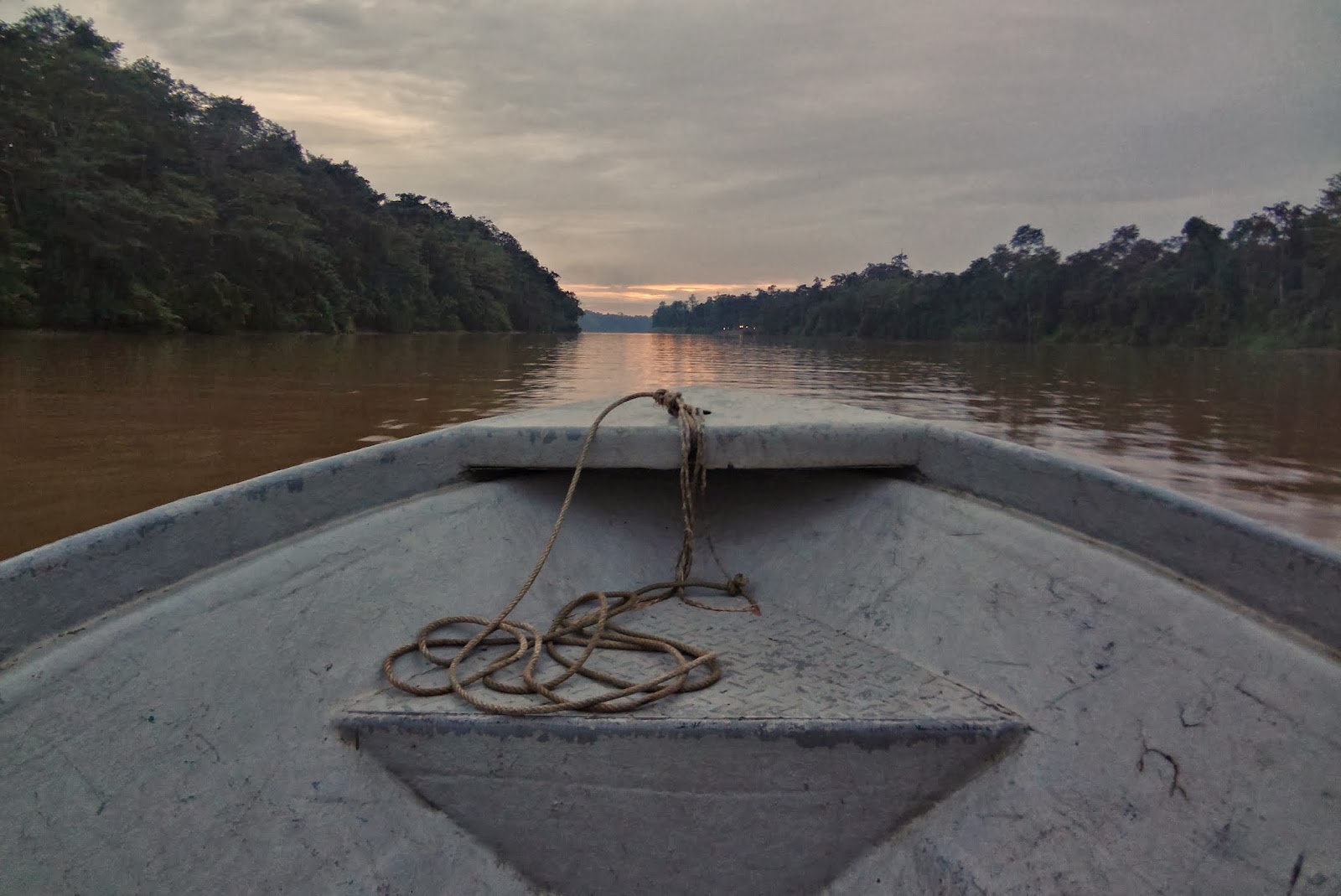

























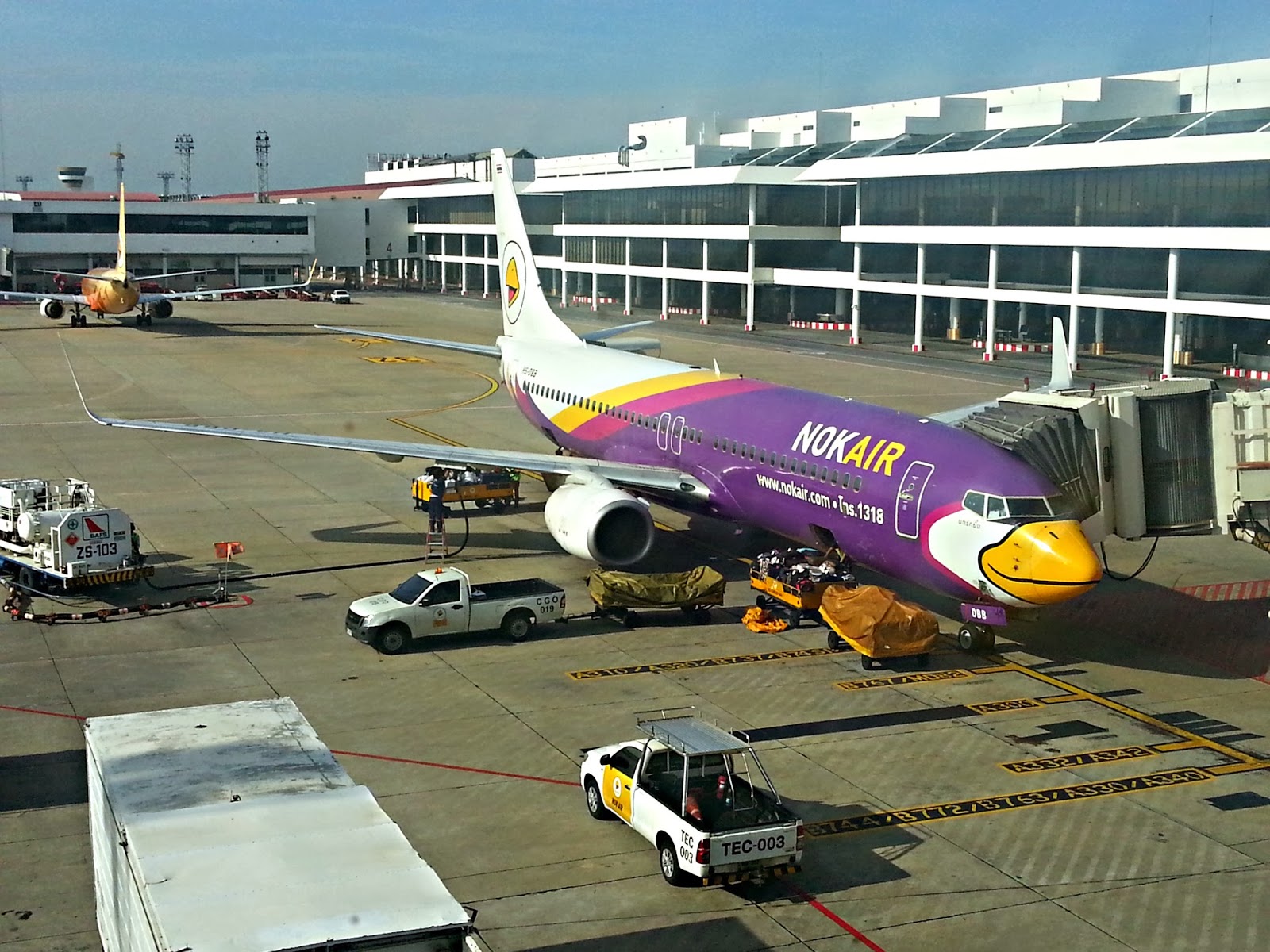
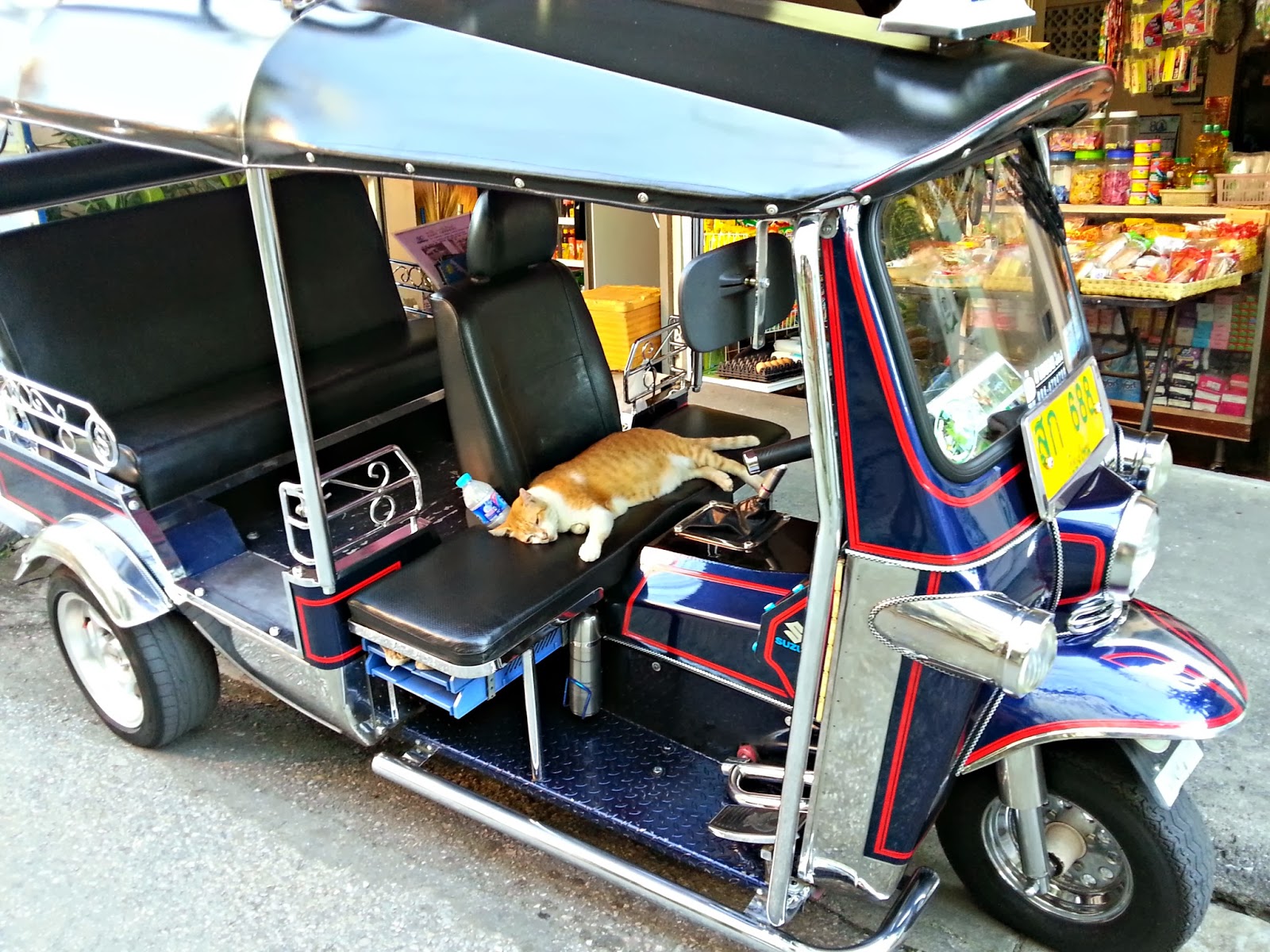

.jpg)

